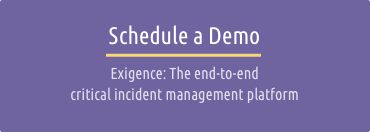
With all the talk about the importance of cross company cooperation, existing management tools do not support it, especially in relation to critical incidents. Of course you have chat tools, like Slack, that are useful for cross company collaboration, but mere collaboration will not suffice when managing an activity/situation.
You cannot take one look at the Slack channel and understand where a certain situation is standing, what happened until now and what are the next steps. In addition, it is impossible to analyze post event.
Collaboration is not enough, you need “management,” and orchestration above that.
Then you start looking at management tools you see that they are not suitable for cross company, cross department, management of events or processes. Every internal department has their own tool. To name a few: Customer Support use Salesforce, Development swear by Jira, HR use WorkDay, IT has helpdesk systems by the dozen, Finance uses... well, there are abundant financial tools.
On top of that, business groups and high-level managers will not investigate any of these. You will not find them looking at a support ticket or a Jira issue, but rather they will ask you for email updates.
Tweet this: When you have a critical incident, technical or cyber related, affecting your online application or other critical internal systems, you must have cross company, cross department, mutual effort to solve it quickly.
Sometimes you might also have external service providers joining in as well. You want to have one place that you can control what is happening and who is doing what. The participants also want one place to update themselves and the others without repeating everything numerous times on various platforms.
And you want management off your back, and off your engineers’ backs. Management will not go looking in your support ticket and you do not need to write email updates having people “reply all” in different places of the thread.
While building Exigence, we put special emphasis on solving this tricky problem, developing a single platform that will be valuable for all the different players involved in the remediation of critical incidents.
Everyone will be on the same page, from Ops and Support people, to the engineers and developers to the business people and the top brass. All participants can find what they need to know and what actions they need to take, in a way that appeals to them.
The secret is to arrange the data in a way that each participant finds the information they need, at the level they need it. And when the incident is over, they get a comprehensive summary in one click for further analysis. Because as the saying goes, “those who do not learn from history are doomed to repeat it.”








